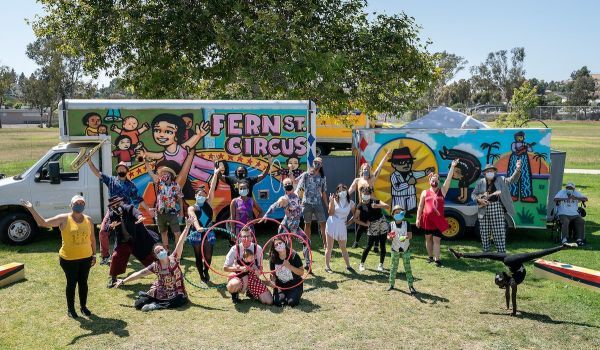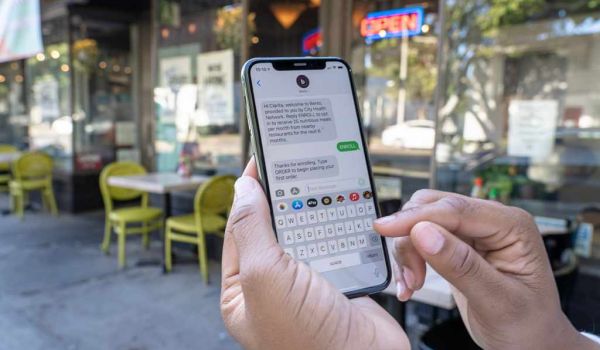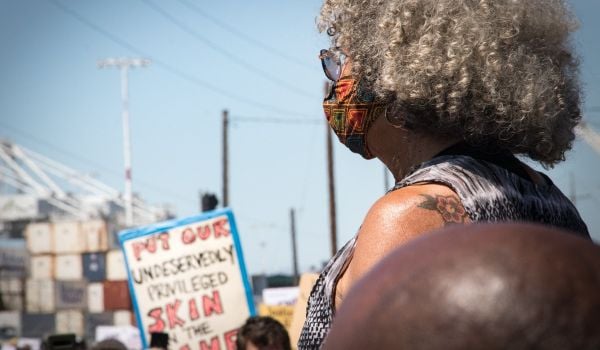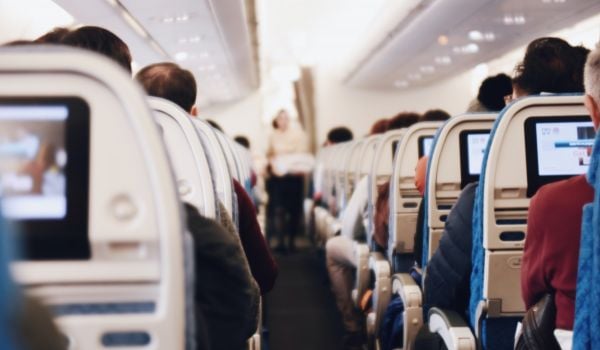Welcome to “The Mobile City,” our weekly roundup of noteworthy transportation developments.
San Diego Celebrates 40 Years of Modern Light Rail
The era of modern light rail transit in the United States began on July 26, 1981, with the opening of a 16-mile-long light metro line connecting downtown San Diego with the Mexican border crossing at San Ysidro.
The single-track South Line proved an instant hit, prompting its double-tracking two years after it opened and ultimately leading to today’s three-line, 53-mile San Diego Trolley system.
The San Diego Union-Tribune reports that San Diego’s Metropolitan Transit System (MTS) threw the line a 40th birthday party on July 31. The party, held at the E Street Transit Station in Chula Vista, featured ‘80s music, local dignitaries, a birthday cake and the guest of honor — just-refurbished Siemens U2 streetcar 1001, the very first of the original 14 vehicles that operated on the initial line.
Several longtime trolley riders spoke of how the line had made their lives better. One of them was 57-year-old Dario Ocano, a Chula Vista resident who uses a wheelchair and has been riding the trolley since its launch.
“The trolley has meant a lot to me over 40 years,” Ocano told the Union-Tribune. “What I like about riding the trolley is you get to meet people, you get to go places, and it’s all handicapped accessible. It helps me get around town and go where I need to go, like my doctors’ appointments.”
Originally, that access consisted only of a ramp to a small platform level with the car floor at one door of the car. The fifth and latest generation of trolleys has low floors that allow all-door wheelchair boarding. And the system continues to expand: by the end of this year, the original line, now known as the Blue Line, will be extended northward from its current downtown terminus to the University of California, San Diego campus in La Jolla, north of the city.
1001’s 13 siblings and five cars from the second U2 order are still operating in revenue service in Mendoza, Argentina; 1001 itself operates on a heritage streetcar loop in downtown San Diego on weekends. At the party, MTS Chief Operating Officer Wayne Terry, who has been with the trolley system from its start, said, “It’s a testament to how we maintain our cars. They have over 2 million miles on them. We thought we would have 25 years with them and then get rid of them, and there they are getting another 20.” San Diego’s almost perpetually sunny and warm climate probably helped as well.
LADOT Announces Changes to Make Transit Work Better for Women
Mass Transit reports that the Los Angeles Department of Transportation (LADOT) is making changes to the city’s DASH circulator service that will make the local bus network more useful for women. The changes accompany the release of an LADOT study of gender equity in transportation.
The pilot project on four DASH routes will allow riders to request that buses let them disembark at places other than established bus stops. City Council President Nury Martinez, who asked LADOT to implement the pilot, told Mass Transit that initiatives like this were an example of what happens when women take charge of public agencies.
“When women are in leadership positions, we recognize situations where policies need to change because we have firsthand experience with the daily responsibilities women manage – putting food on the table, riding the buses with our children, running the household, among countless others,” said Martinez. “DASH’s ‘on-demand stops’ program will be the difference between hauling your bags of groceries 10 blocks or 10 feet.”
And women are in leadership positions across the board at LA’s transportation agencies. Seleta Reynolds has served as LADOT’s general manager since 2014, and this year, the Los Angeles County Metropolitan Transportation Authority (LA Metro) also put a woman at the top by naming Stephanie Williams its CEO. In addition to that, Hilda L. Solis, chair of the Los Angeles County Board of Supervisors, began serving as the chair of LA Metro’s board in early July.
“Women have historically been underrepresented as it relates to leadership roles and design considerations in transportation,” said Solis. “With two women of color at the helm of Metro, we are uniquely positioned to effect cultural and systemic change by focusing on meeting the needs of the most underserved transit riders and working towards truly equitable infrastructure.”
Autonomous Ride-Hailing Gets the Go-Ahead in California
Uber and Lyft executives and investors will no doubt be following this transportation development closely: according to Smart Cities Dive, the California Public Utilities Commission (CPUC) has given the green light to the nation’s first ride-hailing operation using driverless vehicles.
The CPUC in June gave Cruise, a subsidiary of General Motors, the authority to operate an autonomous-vehicle car service on a pilot basis in the state. Vehicles will be limited to a maximum capacity of 15 passengers, and the service will be free for riders to use. Aside from that, further details about the program are unavailable, as neither Cruise nor CPUC officials responded to Smart Cities Dive’s request for comment.
The announcement follows the CPUC’s issuance last fall of a permit to Nuro, an operator of driverless delivery vehicles, to operate a fee-based delivery service in the state. You may have seen Domino’s Pizza ads touting this service on TV.
As part of the permit, Cruise will submit data on vehicle operations to the CPUC each quarter. The data to be reported would go beyond the “disengagement reports” that show how often the backup safety drivers had to take control of the vehicle. The CPUC also required Cruise to develop plans to minimize risk to passengers while in the vehicles, how it will allow passengers to safely board and exit, and how it will educate the public about the vehicles and their use. Cruise submitted these plans to the CPUC in a confidential document unavailable to the public.
Several industry observers quoted in the report said they expect carmakers to show keen interest in the data reported by Cruise.
“I’m not saying share all your proprietary data, but safety data,” Mark Rosekind, chief safety innovation officer at Cruise competitor Zoox, told Smart Cities Dive. “Tempe [where an Uber AV crashed into and killed a pedestrian in 2018], it’s what I call ‘never again.’ Something like that happens, all the data gets shared. You shouldn’t have to have every company going through an experience like that until they figure out how to handle that circumstance. Once, and then never again.”
Know of a development that should be featured in this column? Send a Tweet with links to @MarketStEl using the hashtag #mobilecity.

Next City contributor Sandy Smith is the home and real estate editor at Philadelphia magazine. Over the years, his work has appeared in Hidden City Philadelphia, the Philadelphia Inquirer and other local and regional publications. His interest in cities stretches back to his youth in Kansas City, and his career in journalism and media relations extends back that far as well.
Follow Sandy .(JavaScript must be enabled to view this email address)

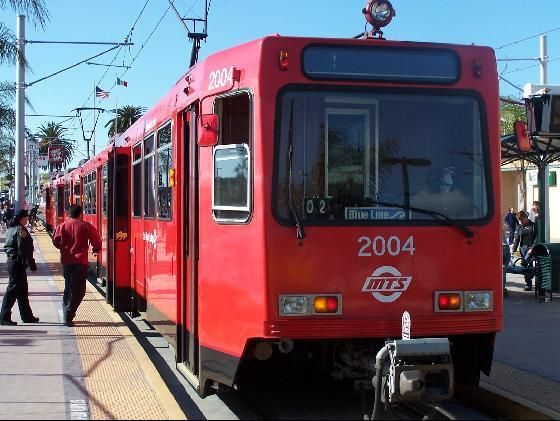
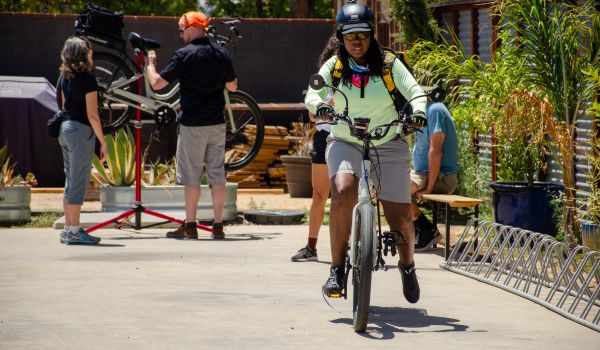
_600_350_80_s_c1.jpg)
